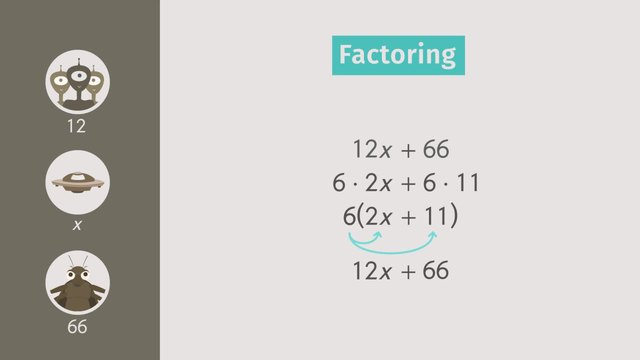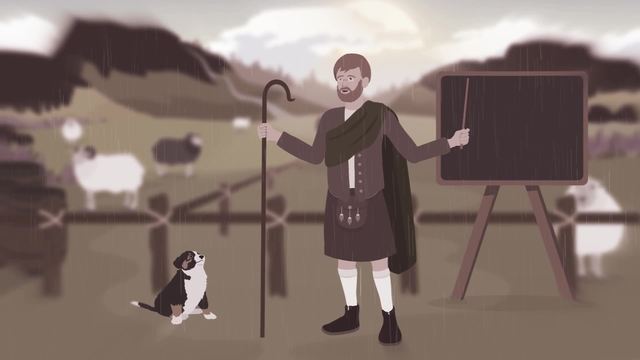Keywords for Multiplication


Basics on the topic Keywords for Multiplication
When reading a word problem, there are many different keywords which are equivalent to using different mathematical operations. For instance, words like times, multiply, twice, triple, quadruple, as much, for every, and so on, represent the operation multiplication. Learn how to recognize keywords for multiplication by helping Judge David Hasselsloth calculate the strength factor of each contestant or competing animals for him to determine the winner in strength factor contest held in Sandstone Aquifer. Common Core Reference: CCSS.MATH.CONTENT.6.EE.A.2
Transcript Keywords for Multiplication
We’re here at the Sandstone Aquifer for the Strength Factor Contest. Let’s meet the contestants.
We have animals from far and wide competing in feats of strength: a gorilla vs a vulture competing in the deadlift an elephant vs a tiger in a carrying contest and an ox vs a dung beetle in a contest of pushing power. To judge the winners, the judge will compare how much weight each of the contestants can lift with their respective body weight. The contestants with the greatest strength factor in their competition will be crowned the victor. Our judge, David Hasselsloth, will have to perform multiple calculations to determine the relative strength of the two competing animals. Since this is a contest of relative strength, the judges need to know the keywords for multiplication.
In multiplication problems, you’re given a multiplicator and a multiplicand. When we multiply these together, we get the product, which is the answer. Thanks to the commutative property of multiplication, it doesn’t matter the order in which things are multiplied together so the multiplicator and multiplicand are commonly referred to as factors. There are many ways to represent multiplication: vertically, like this or horizontally like this: Each of these methods of representation mean the same thing, so which one you use is your choice.
David looks at the results from the deadlift competition. Kong weighs 350 lbs. and registered a strength factor of 10!
Keywords for Multiplication exercise
-
Find the right ways to express multiplication.
HintsThe keyword factor indicates multiplication.
There exist different ways of writing down a product.
Regardless of how a product is written down, the result is always the same. The result of multiplication is the product.
SolutionFirst of all we need to decide which operation we have to use.
The body weight of Kong is $350$ lbs. A strength factor of $10$ is given too.
The keyword factor indicates, that we have to multiply.
Here you see different ways to write a multiplication down. Regardless of how it is written down, the result, a product, is always the same:
- $350 \times 10 =3500$
- $350(10)=3500$
- $3500\cdot 10=3500$
-
Find the keywords indicating multiplication.
HintsHere you see some keywords for multiplication:
- product
- as many as
- doubled ($\times 2$)
- tripled ($\times 3$)
Here you see different ways to write down multiplication.
Read $\times$ as times.
SolutionGriff registers a strength factor of $4$.
We can also say times $4$ or quadruple.
All of those keyword indicate multiplication.
This leads to $25\times 4=10$.
-
Find the right expression.
HintsDecide the keywords and the operation they indicate.
Here you get some keywords for multiplication
- times
- product
- as many as
- double ($\times 2$)
- triple ($\times 3$)
Decide what to multiply.
Let's have a look at an example: Paul is buying $5$ muffins, at $2$ dollars per muffin.
So he has to pay $5\times 2=10$ dollars in total.
SolutionThe elephant is able to carry $2.5$ lbs. for each $1$ lb. of its own body weight.
He weights $12000$ lbs. So we can find the carry weight as follows:
$12000\times 2.5=30000$ lbs.
His friend the tiger has a strength factor of $3$, a triple, and a body of weight of $400$ lbs.
Again we have to multiply the values, $400\times 3=1200$, to get the carry weight of $1200$ lbs.
-
Identify the correct expression.
HintsYou need two pieces of cake for each of your friends.
How many pieces of cake do you need for $4$ friends?
Right: You have to multiply $4\times 2=8$ to get the number of needed pieces of cake.
$7$ days are one week.
Cooking or baking are good examples for multiplying:
If you know the recipe for $10$ muffins, you have to multiply the amounts of ingredients accordingly.
- For $25$ muffins you have to multiply by $2.5$.
- For $40$ muffins you have to multiply by $4$.
Solution- Sally's buying of chairs
$~$
- Biking Paul
$13 \frac{\text{miles}}{\text{hour}}\times 10 \text{ hours}= 130$ miles. Here you can shorten the fraction by hour.
$~$
- Swimming Matteo
$~$
- Apple pie
-
Determine the keywords for multiplication.
HintsRemember for addition: summand plus summand equal sum.
Imagine a word problem with the corresponding keyword.
Let's have a look at the following example: the amount of $20$ dollars Paul saved is tripled by his aunt Sally.
The corresponding expression is given by $3\times 20$.
Keep the following for subtraction in mind: minuend minus subtrahend equal difference.
SolutionHere you see some keywords indicating multiplication:
- times
- quadruple
- for every
- double
- per
multiplicator $\times$ multiplicand $=$ product
or
factor $\times$ factor $=$ product.
All these terms are keywords for multiplication too.
-
Determine the strength factor.
HintsEach strength factor is a decimal number less than $1$.
If you know the strength factor you have to multiply by, then multiply it by the body weight to get the amount of ice cream eaten.
Turn the equation,
strength factor $\times$ weight $=$ amount of ice cream,
into a division.
Let's have a look at the following example: we know the carry weight of the elephant, i.e. $30000$ lbs, and his body weight of $15000$ lbs. We get the strength factor as follows:
$f=\frac{30000}{15000}=2$.
SolutionHere we know the body weight for each person as well as Billy the cat. We also know the amount of ice cream each family member eats.
How can we determine the strength factor for each person as well as for Billy?
We divide the amount of ice cream by the bodyweight.
Father
$f=\frac{1.26}{180}=0.007$
Mother
$f=\frac{0.56}{140}=0.004$
Paul
$f=\frac{0.56}{70}=0.008$
Billy
$f=\frac{0.75}{15}=0.05$














